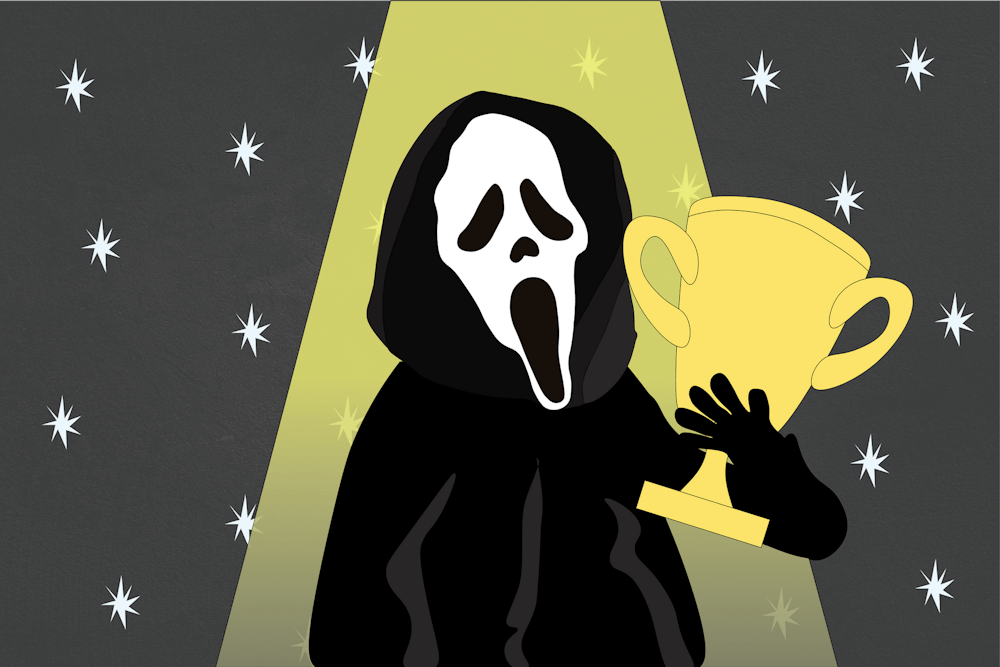A Rotten Tomatoes review of “Terrifier 3” reads: “Limbs fly, heads are gashed and split in two by hand, and blood bursts from every wound at geyser force.”
The beauty of horror lies in these very grotesque qualities. The violence and debauchery unfolding on our screens make it hard to watch but impossible to look away. The visceral nature of these films is what makes them so enticing to us; witnessing unimaginable carnage for just a few moments floods us with adrenaline akin to a rollercoaster going breakneck speed. And these images of terror and gore do not lose their horrific quality the more they appear — instead, many dedicated viewers must still cling to their blankets as they watch in fear.
This fascination with terror is not a bad thing, and fear is not an inherently “bad” emotion, either. Aside from the pleasurable rush of adrenaline it provides, being scared allows us to experience the relief that follows, especially with regard to certain fears. Instead of avoiding these uncomfortable feelings, they are embraced and enjoyed. Interrogating sensations of fear, anxiety or dread are important, and the benefit of movies is their fiction. The screen is a safe space to indulge in the things that scare us, and this makes horror incredibly valuable to the arts.
The most interesting aspect of horror is its reflective quality, however. Examining the gamut of themes and subjects explored in horror movies reveals less about any strange perversions of its writers or creators. Rather, the broadly held and often subconscious fears of our society are put on graphic display.
Horror is a powerful vehicle for social commentary because it allows filmmakers to manipulate and exaggerate to the furthest extent the preexisting anxieties of the public. Whether these be natural, like a fear of the dark, or culturally manufactured, they allow us to explore the things that scare us in safe, low-stakes environments.
Scary movies also mirror the tensions of different political and social environments with certain genres gaining or losing favor according to the contemporary moment. The slasher boom of the '80s, for example, can be directly tied to the steep rise in conservative ideology during the Reagan administration; a response to growing reactionary sentiments, slasher films were gratuitous in blood, nudity and sexuality.
They introduced the concept of the “final girl,” the lone female survivor among her compatriots that defeats or outwits the villain. This trope, born from a sub-genre of cheesy kills and familiar beats, is an instance of feminist archetypes that showcases women not only as protagonists but strong, capable ones.
It's due to these very qualities that horror presents so many possibilities for marginalized communities in particular. The expressive and abject possibilities of horror lend themselves to the exploration of the fearful realities of the oppressed body. The historical experiences of oppression and violence are fruitful sources of inspiration, and contemporary filmmakers have taken great advantage of this fact.
In recent years, for example, there has been growth in the Black Horror genre, in which Black writers and directors explore the violent, terrifying nature of racism through the fantastical and preternatural genre. From “Get Out” to “Them,” this kind of horror empowers creators to delve into the ugliness of oppression.




